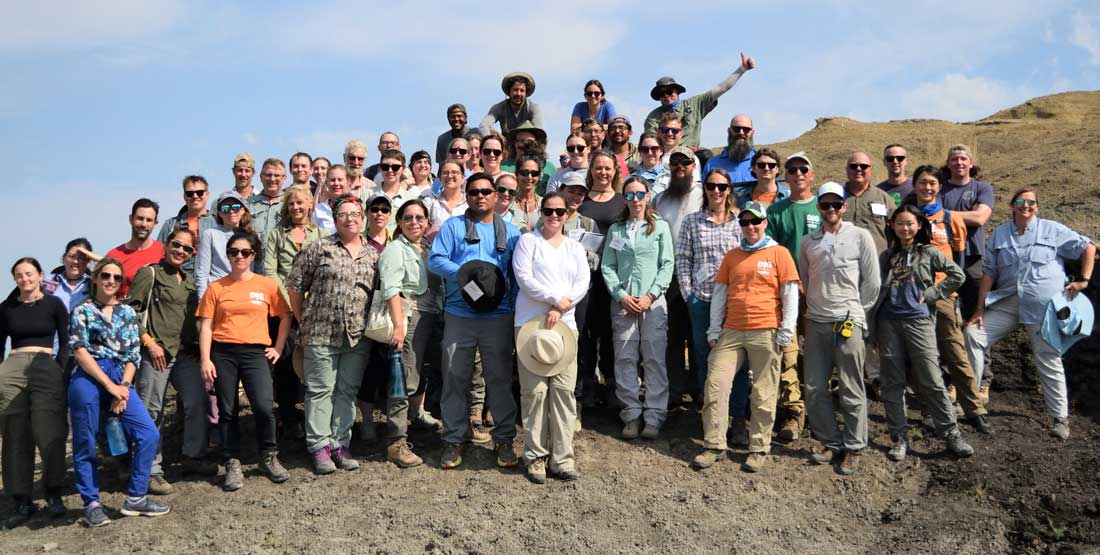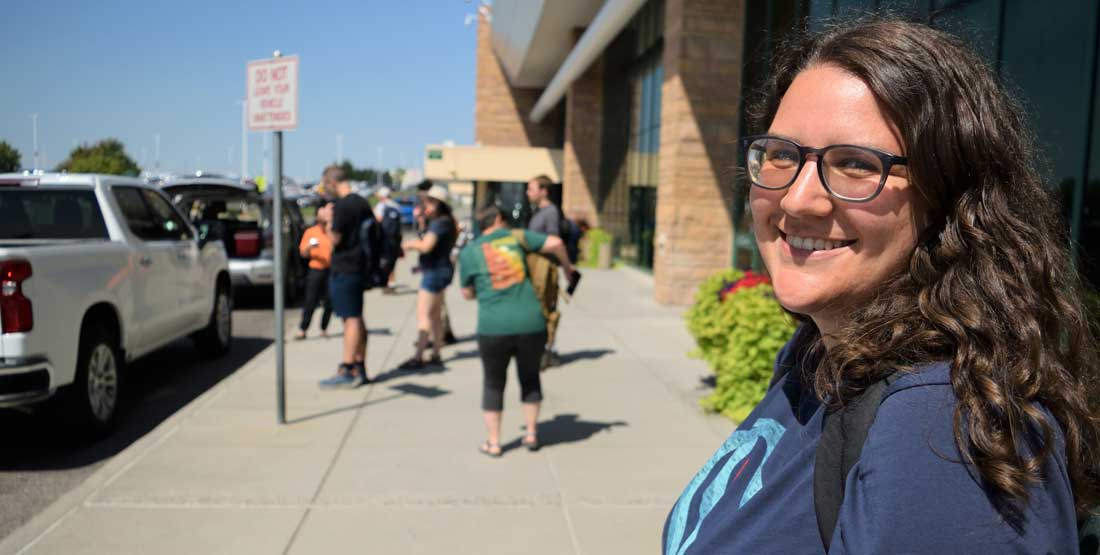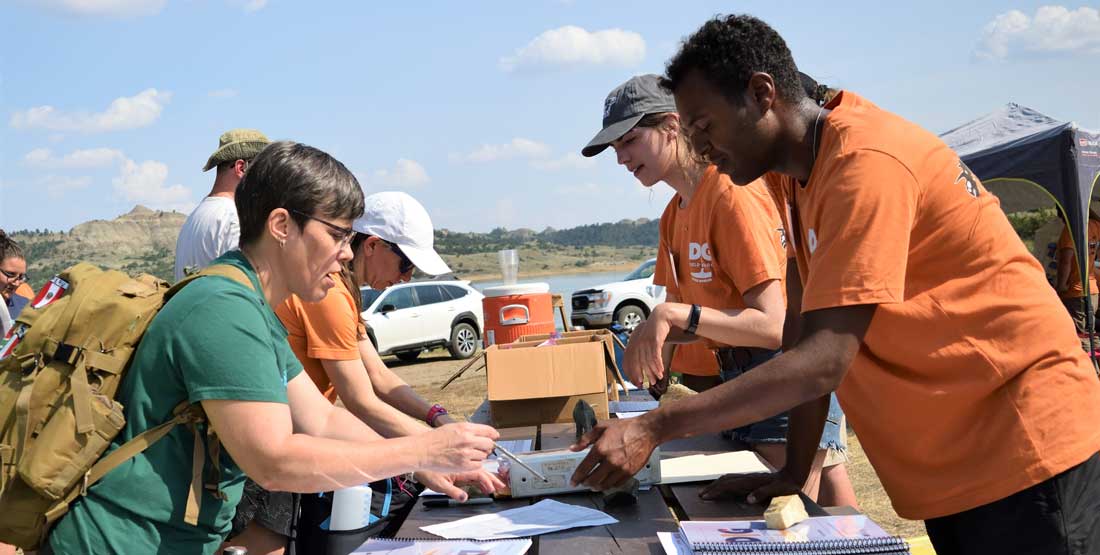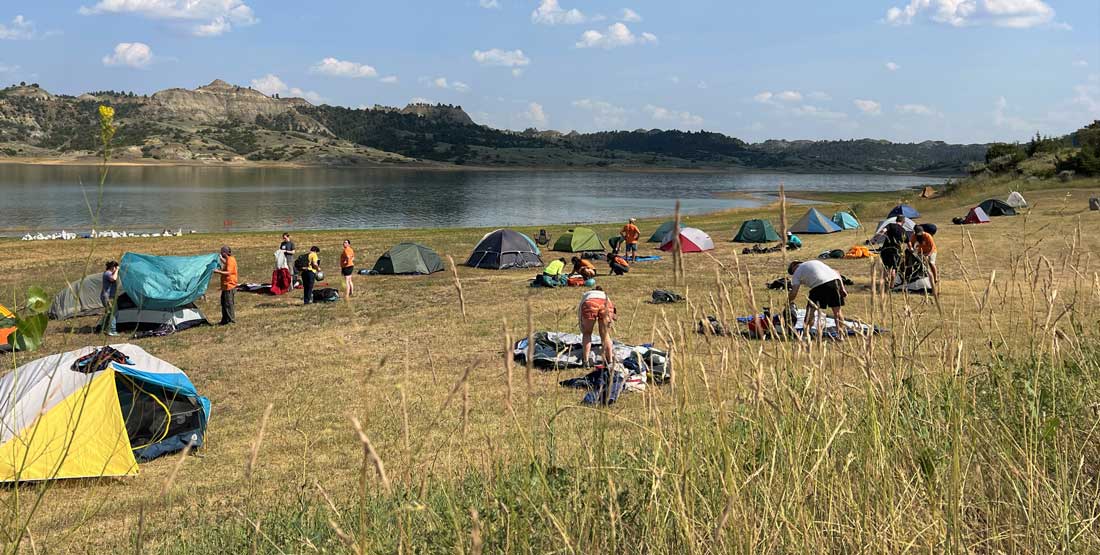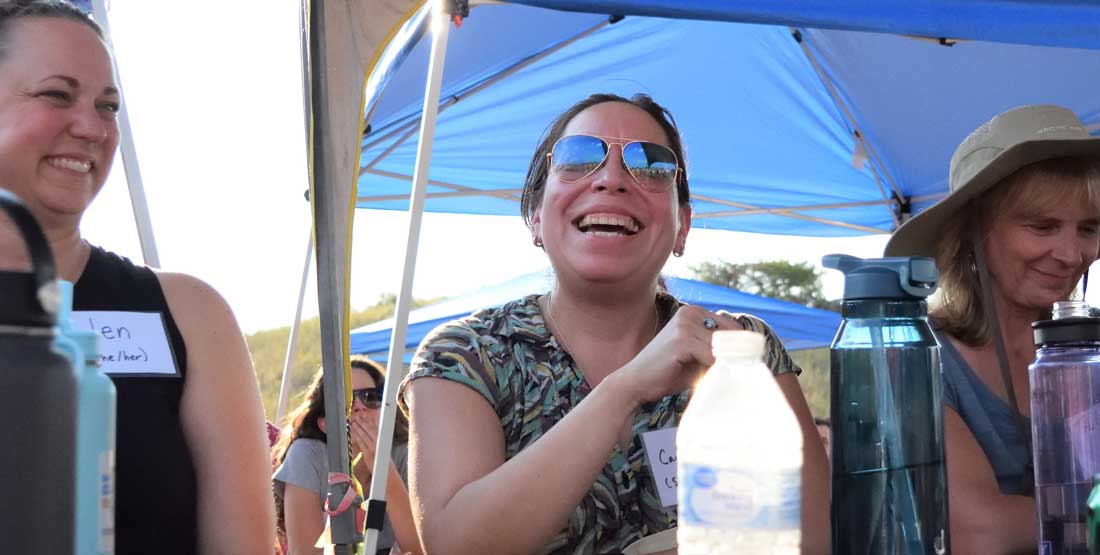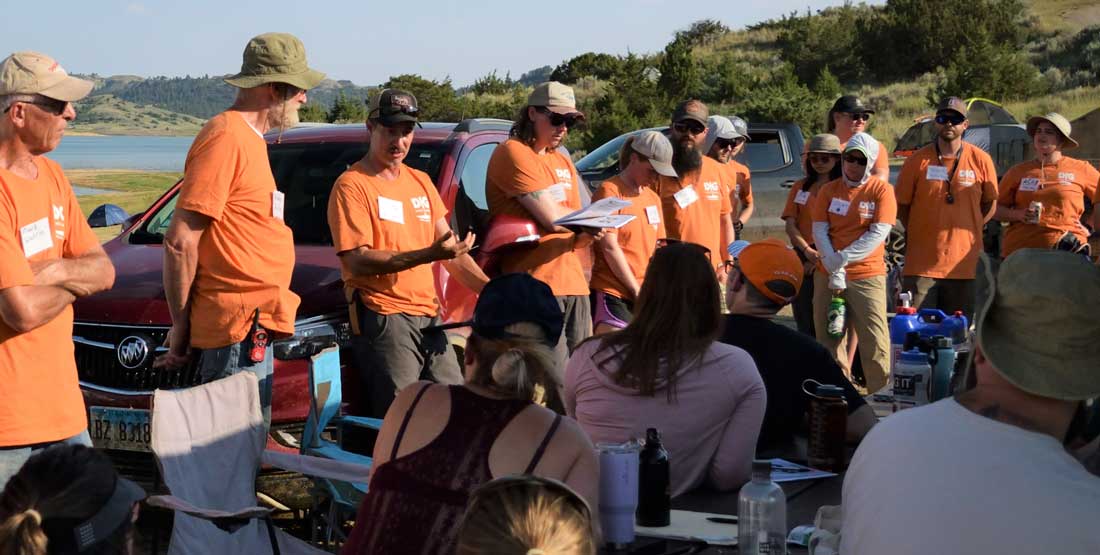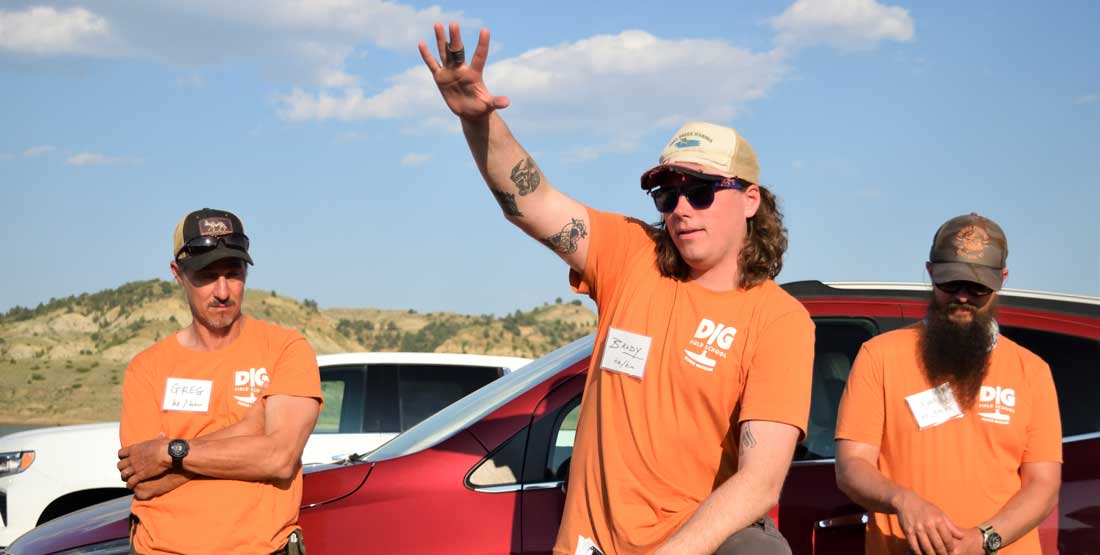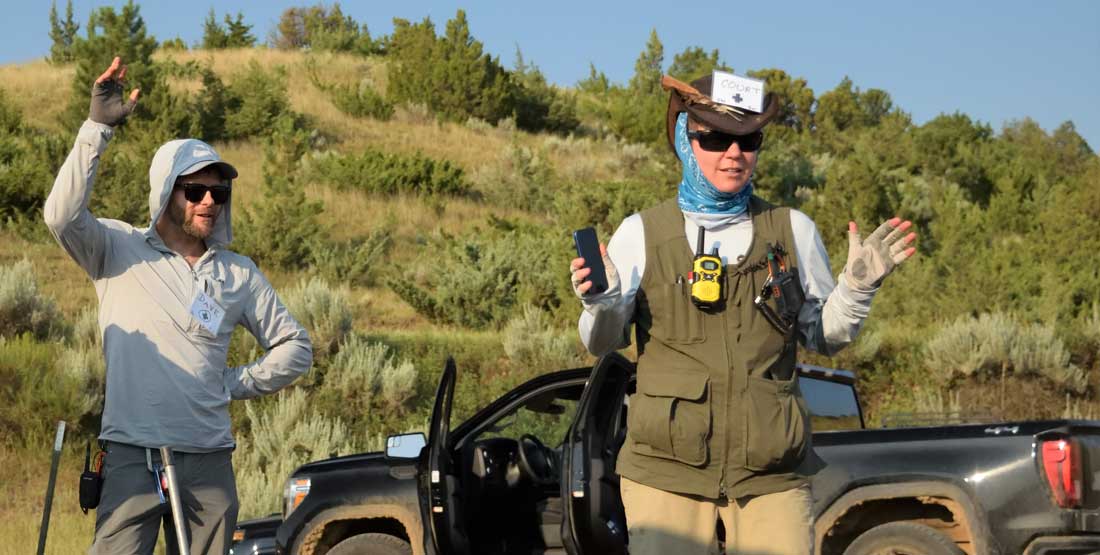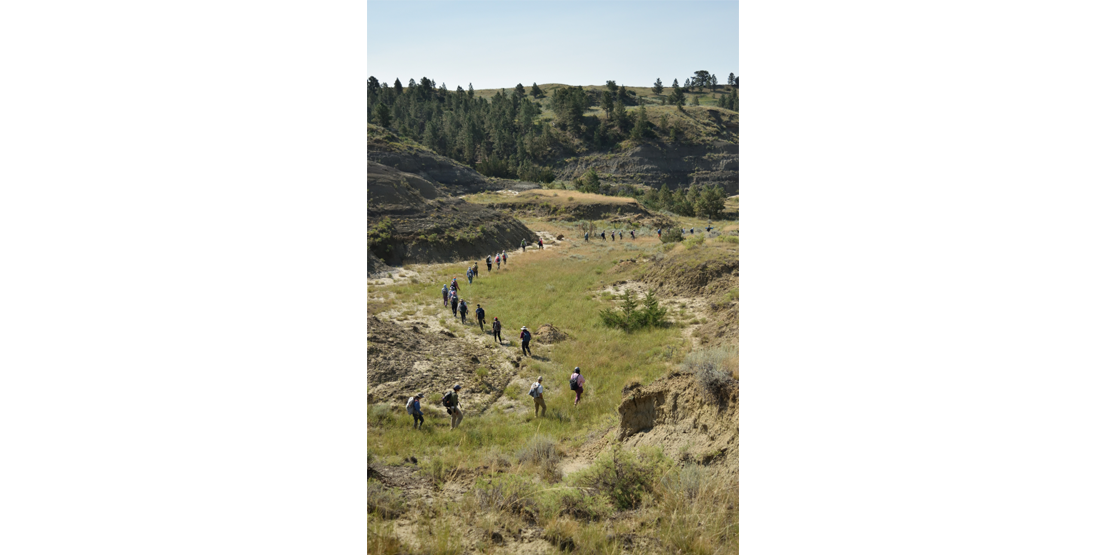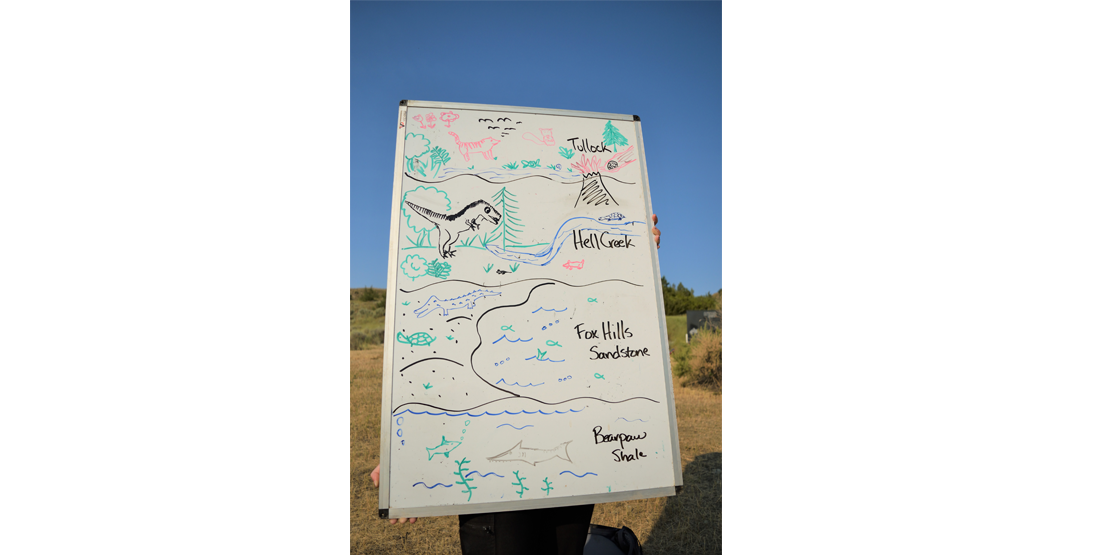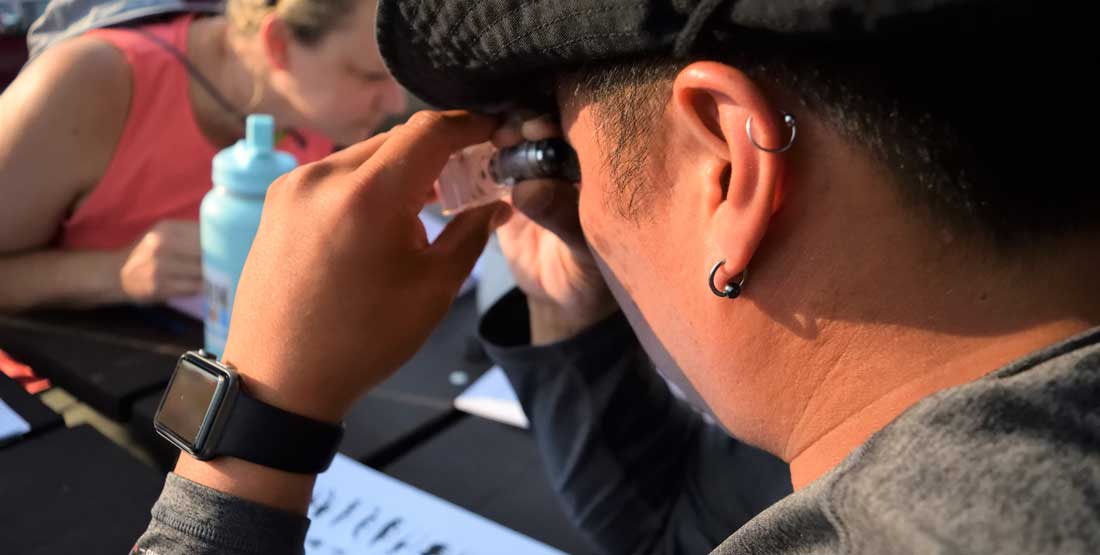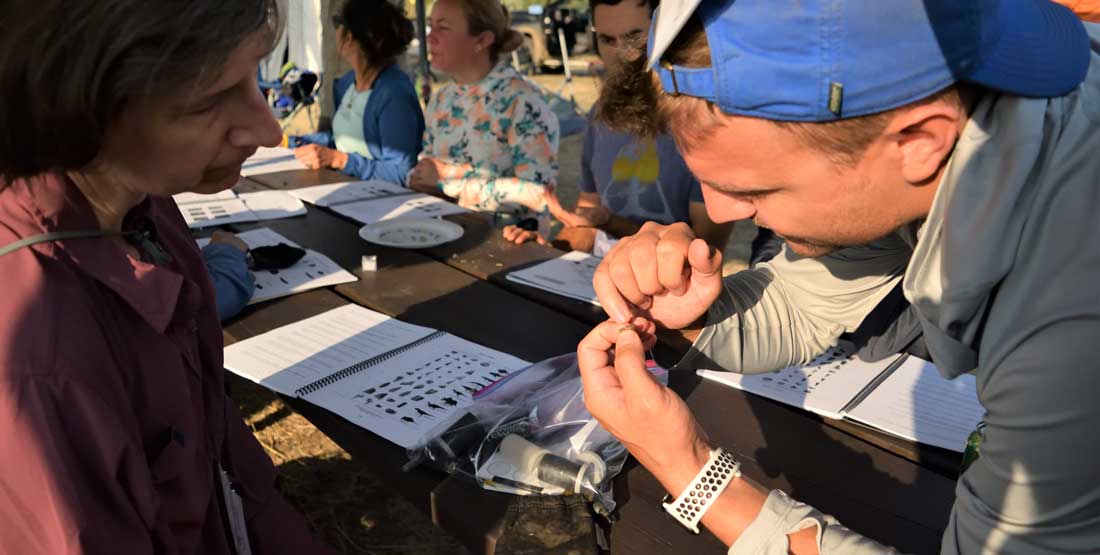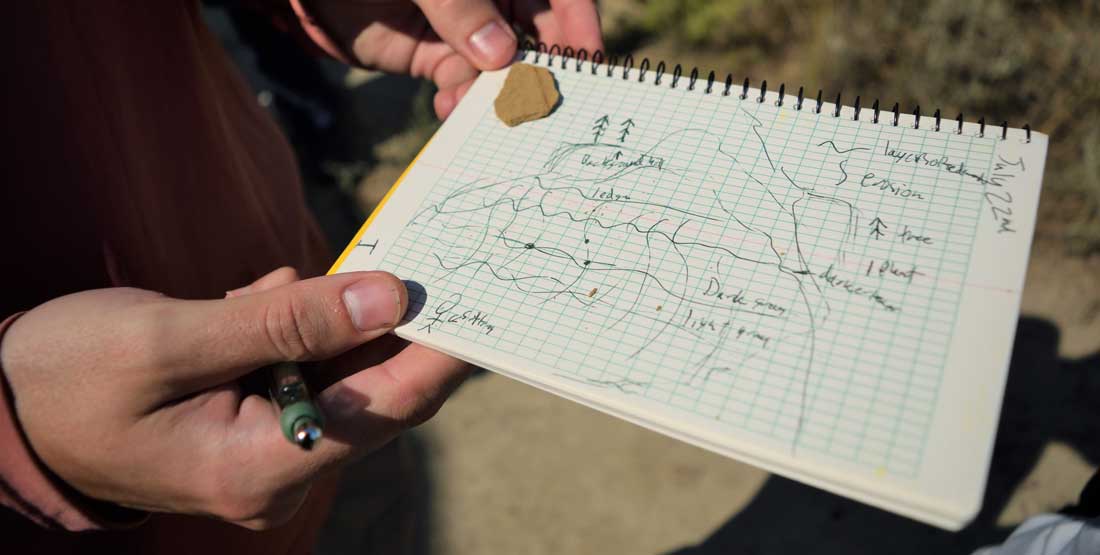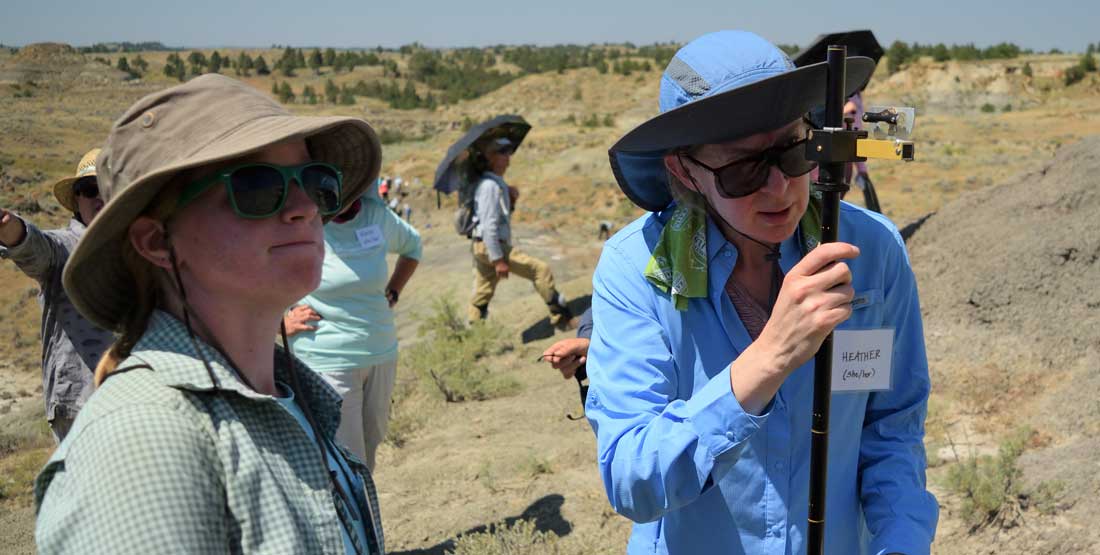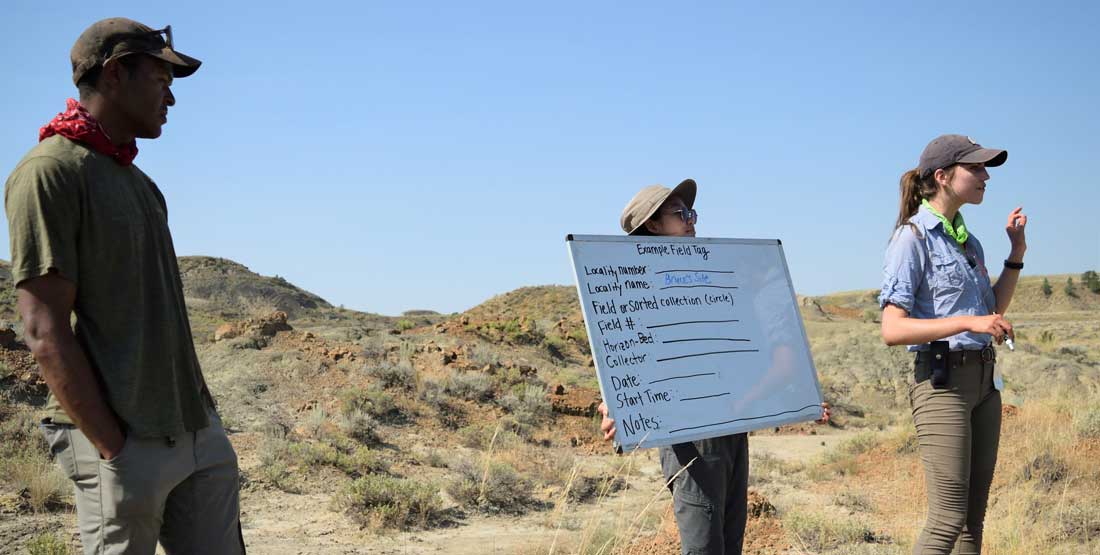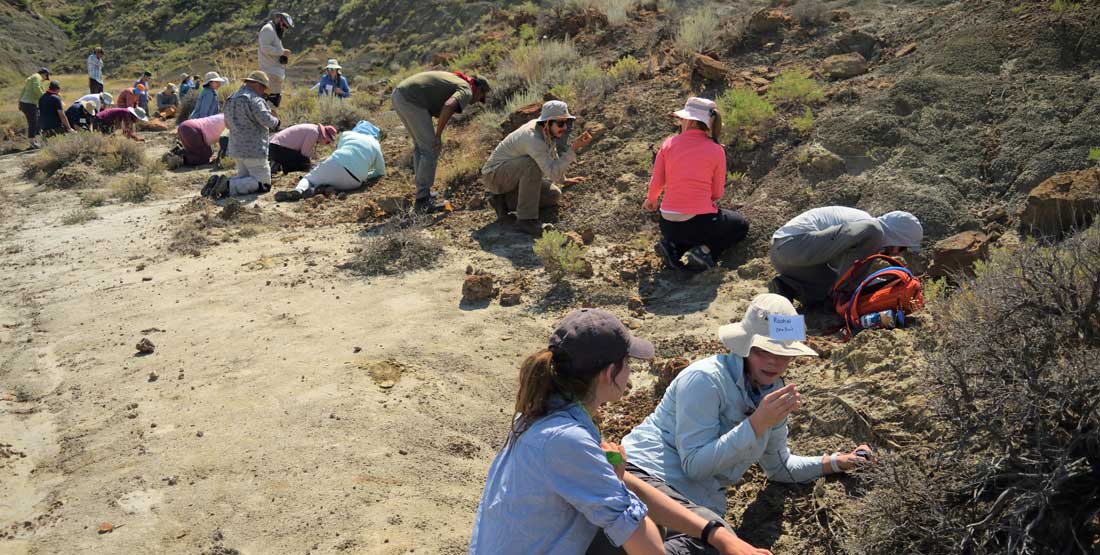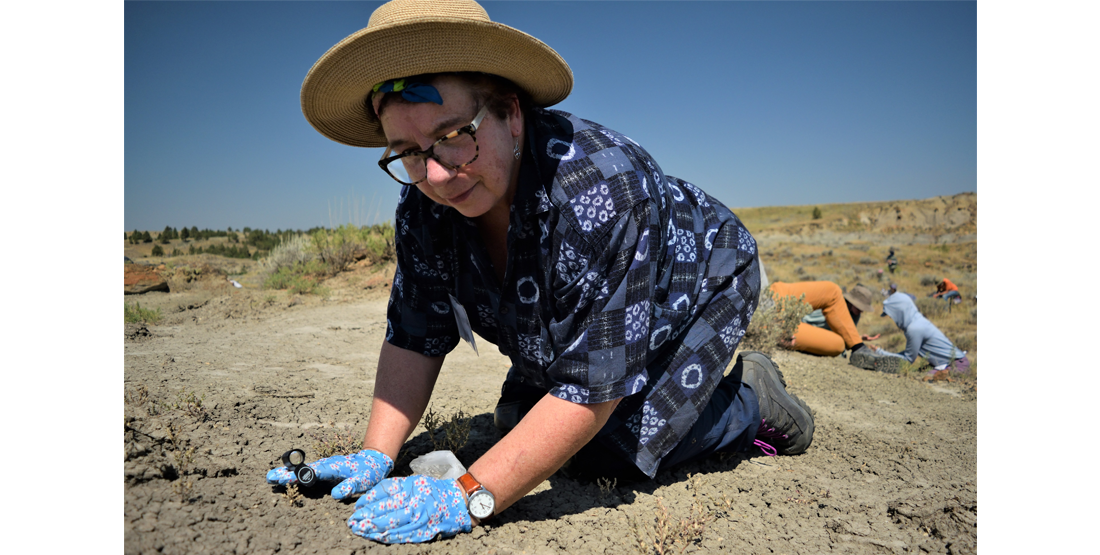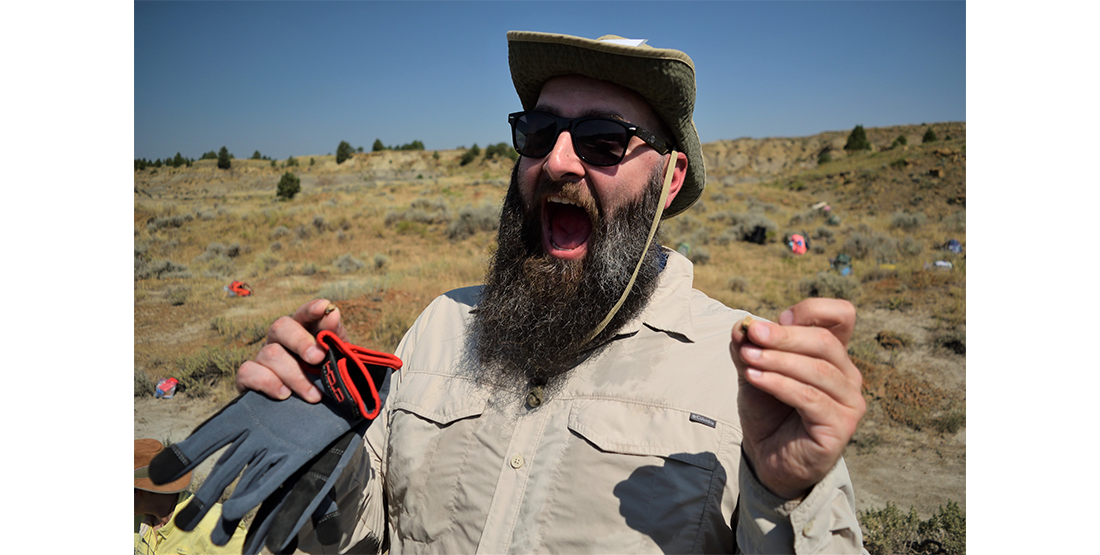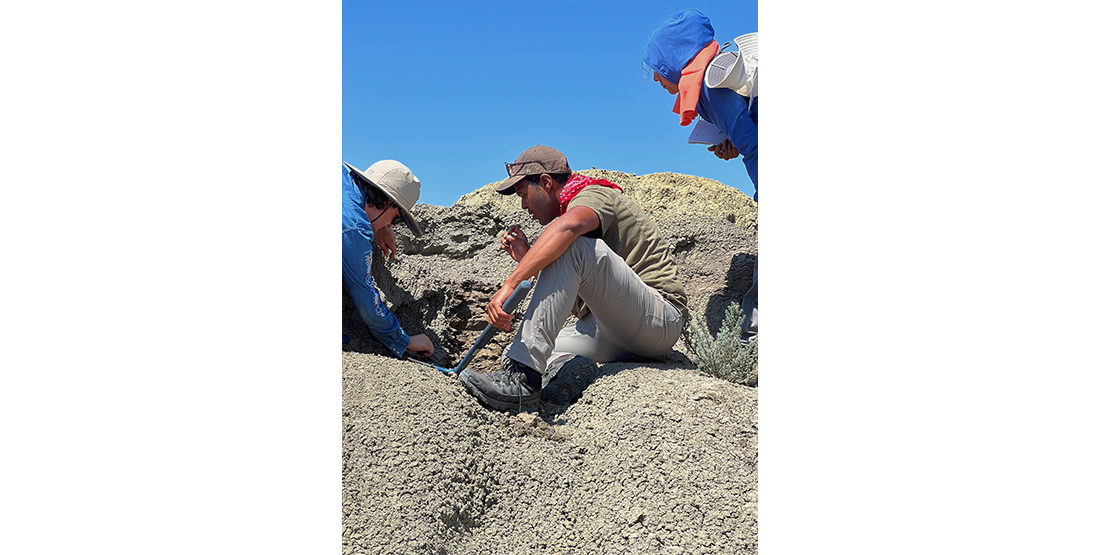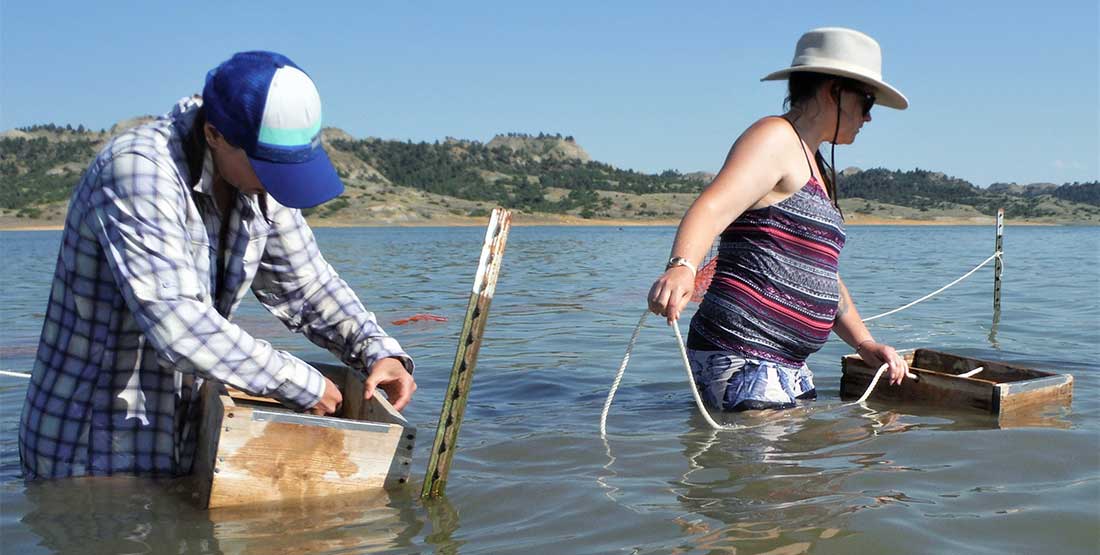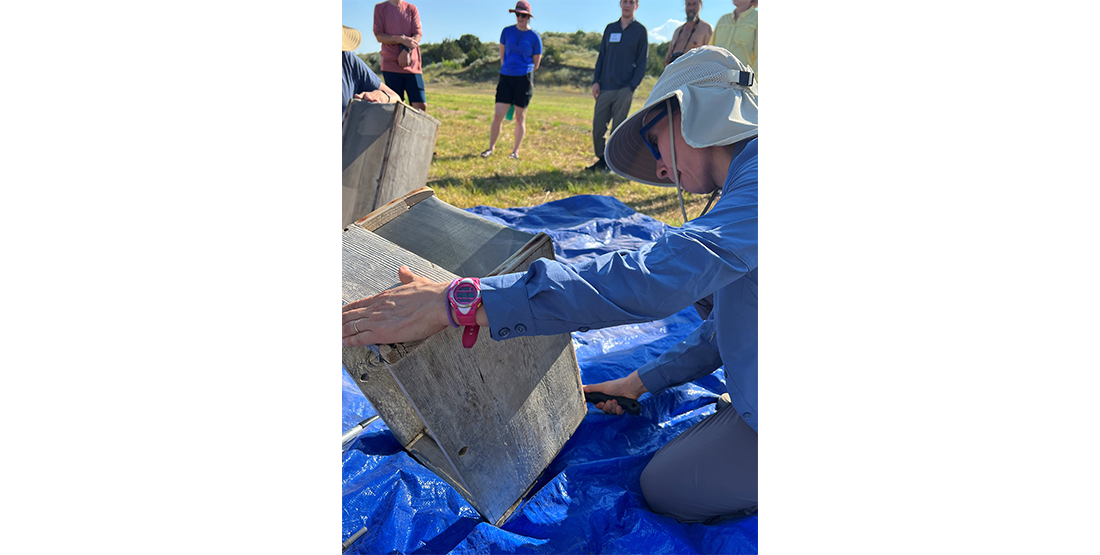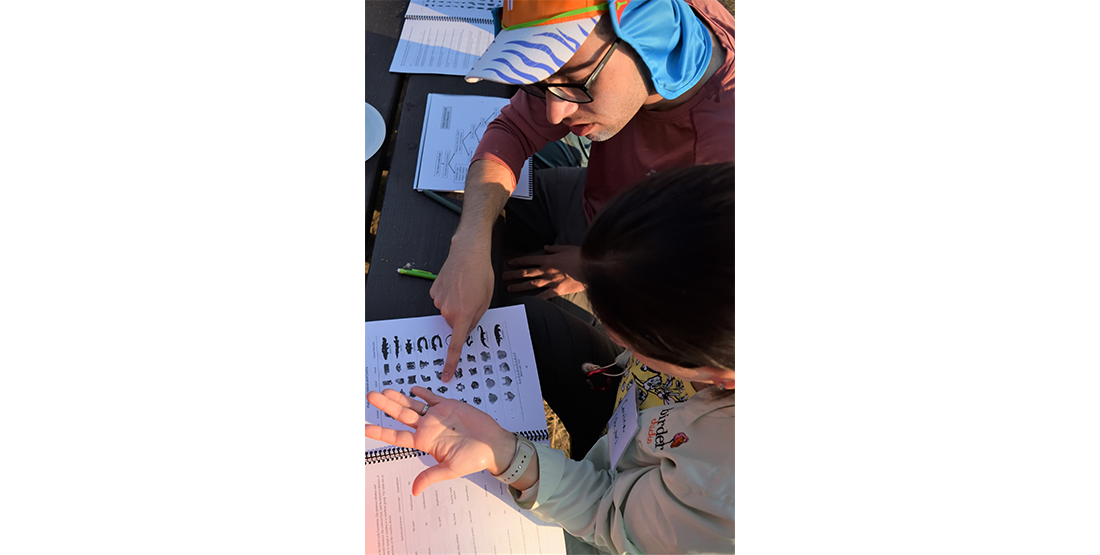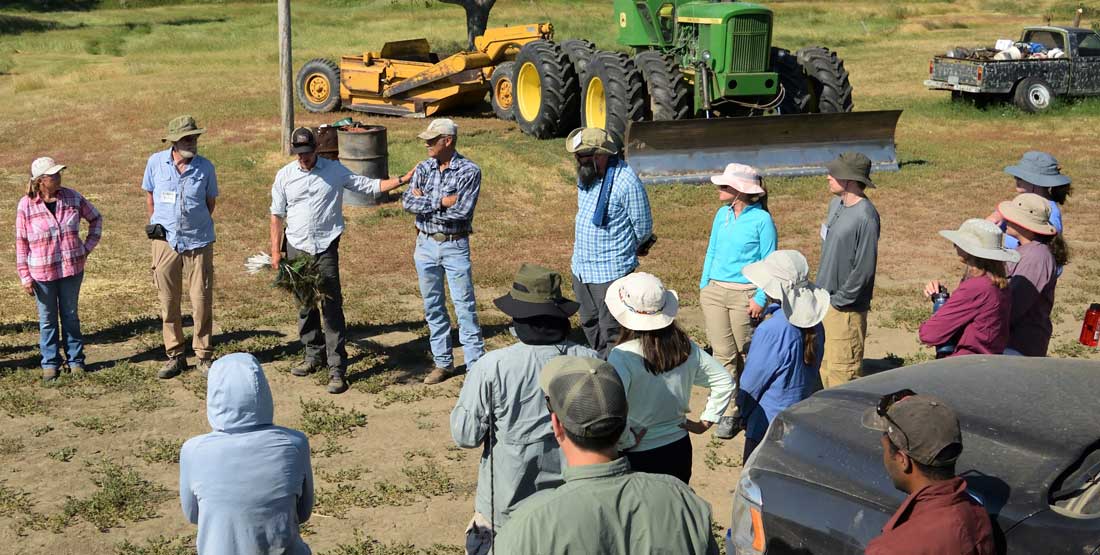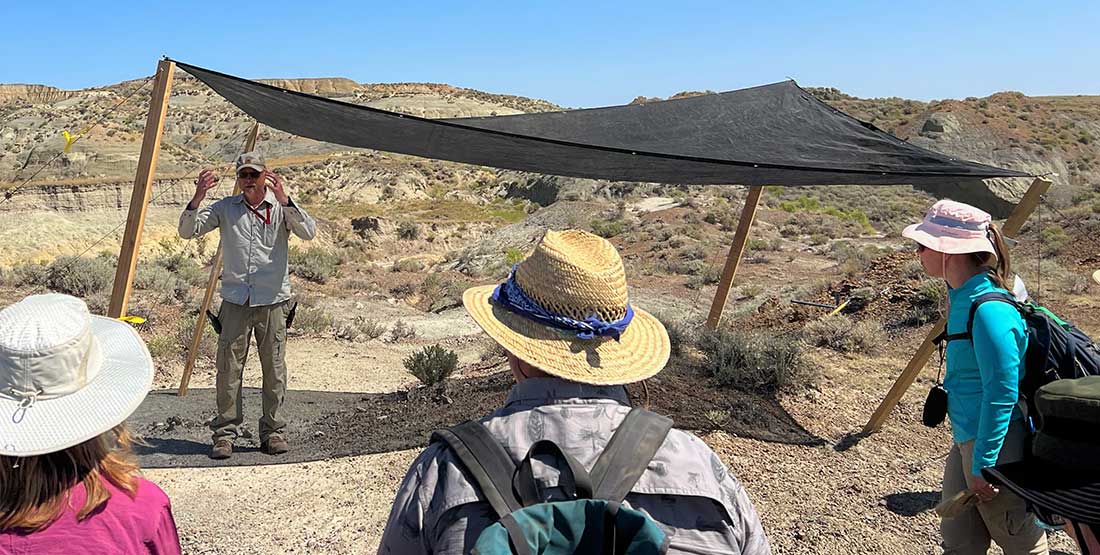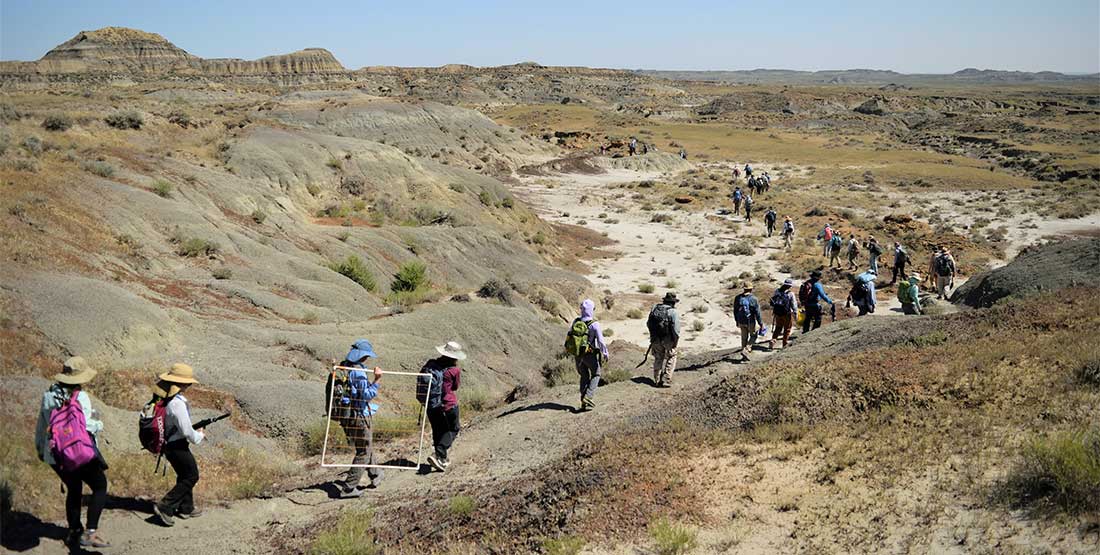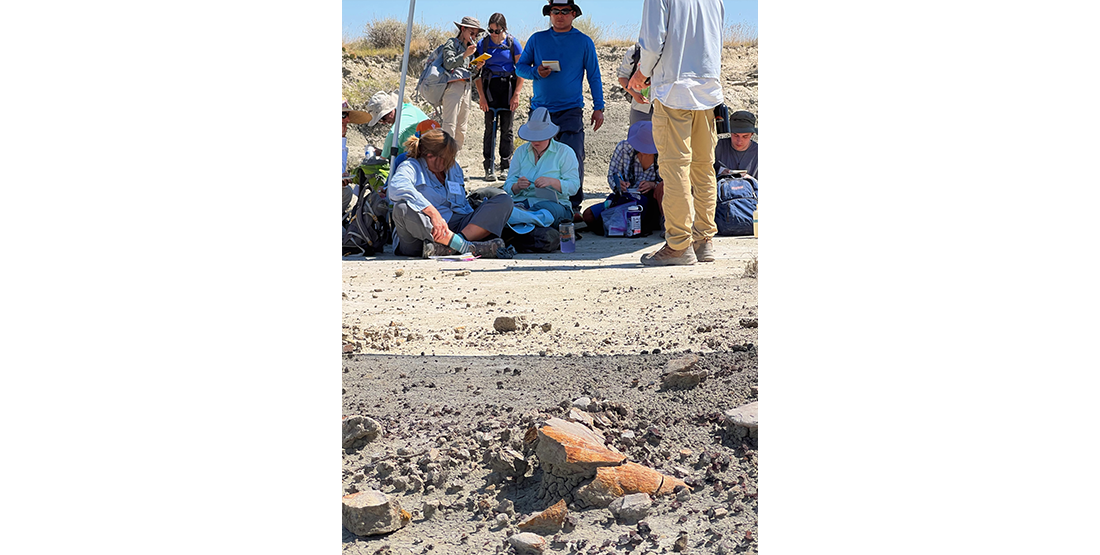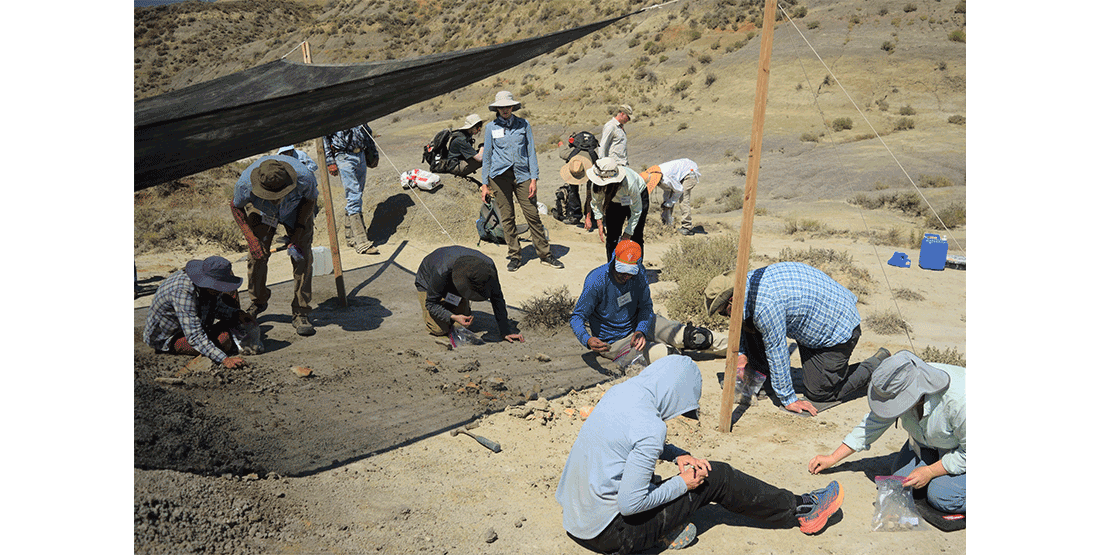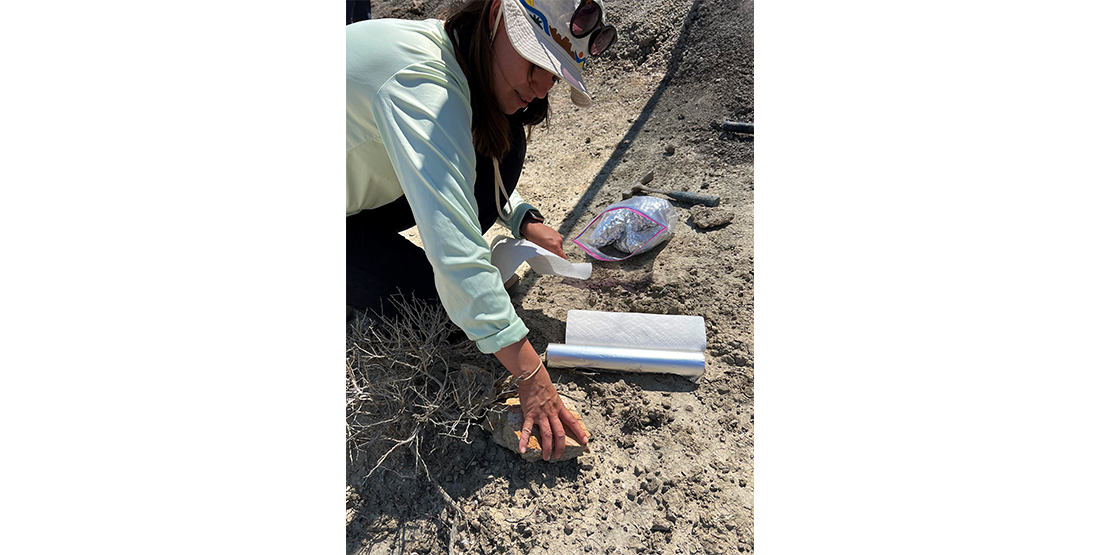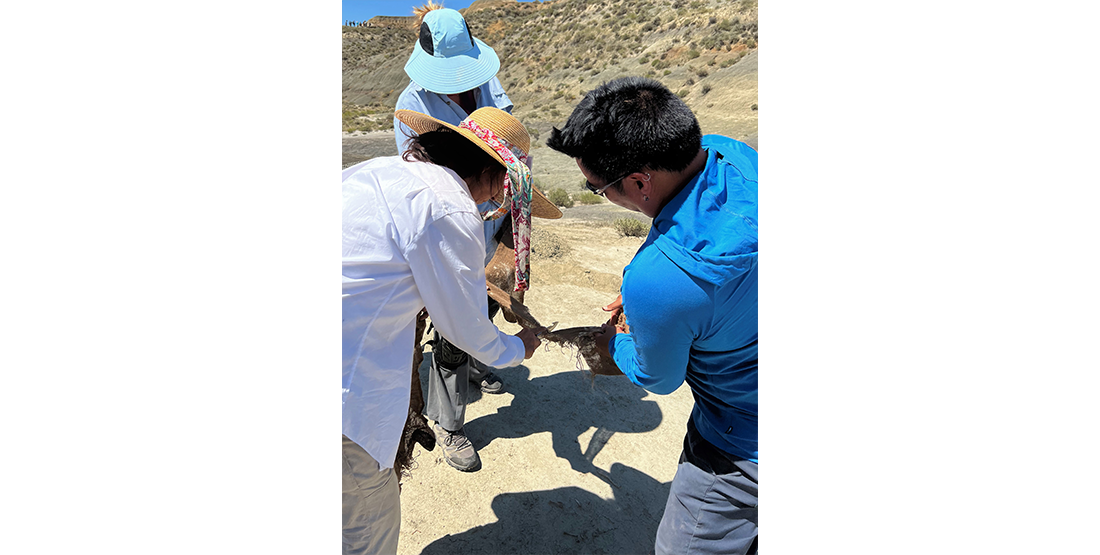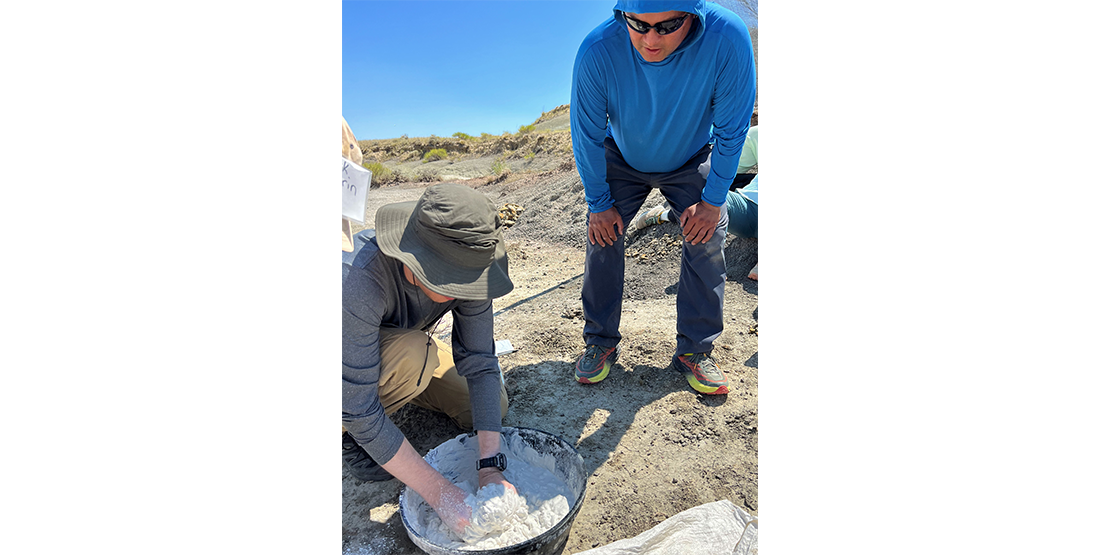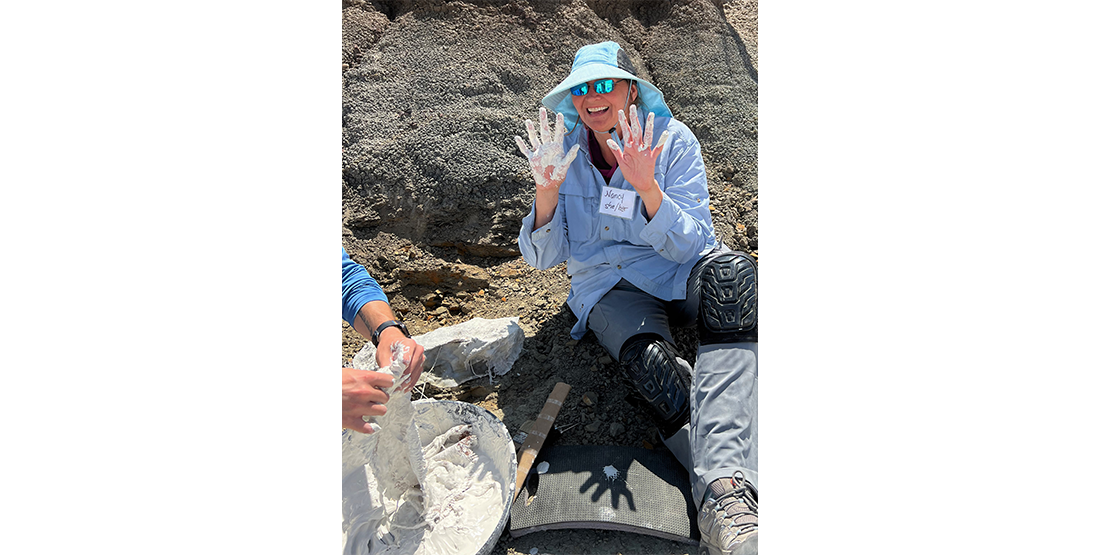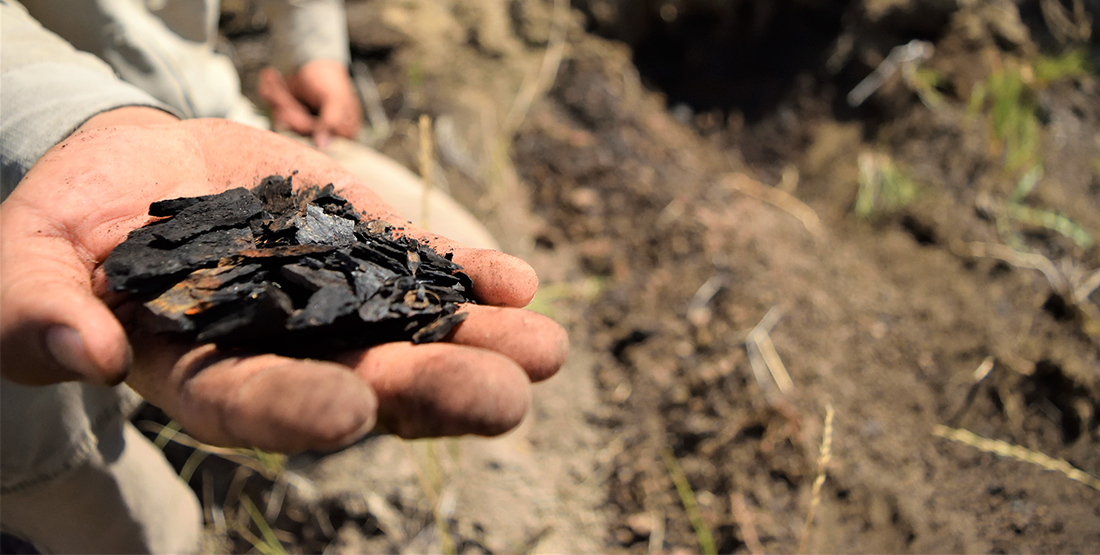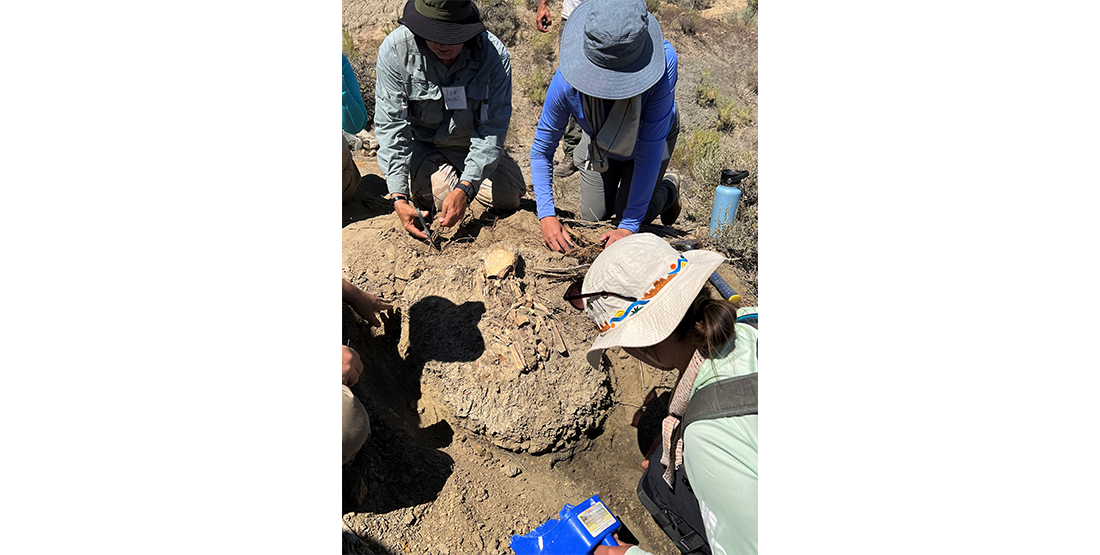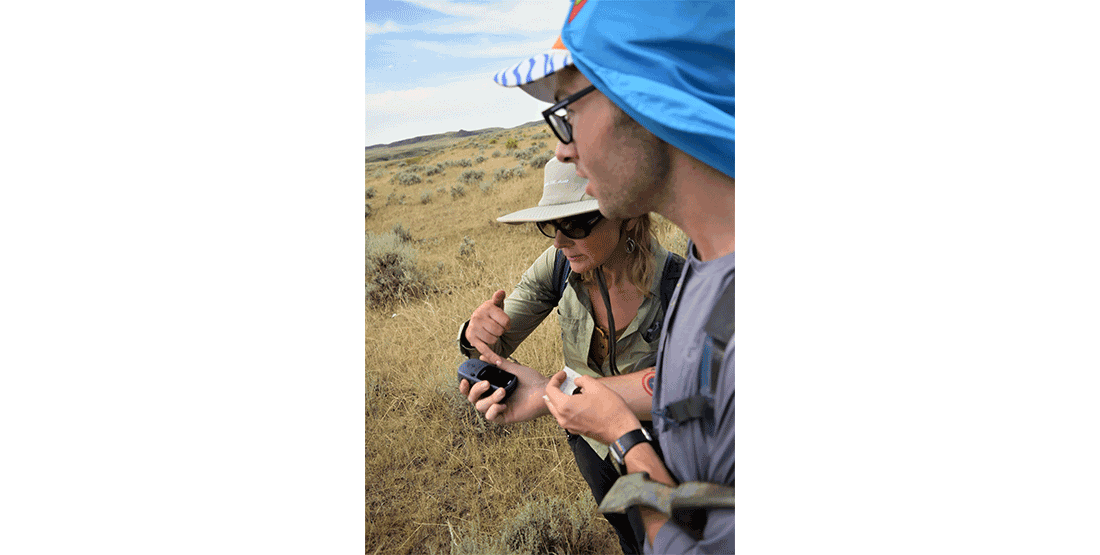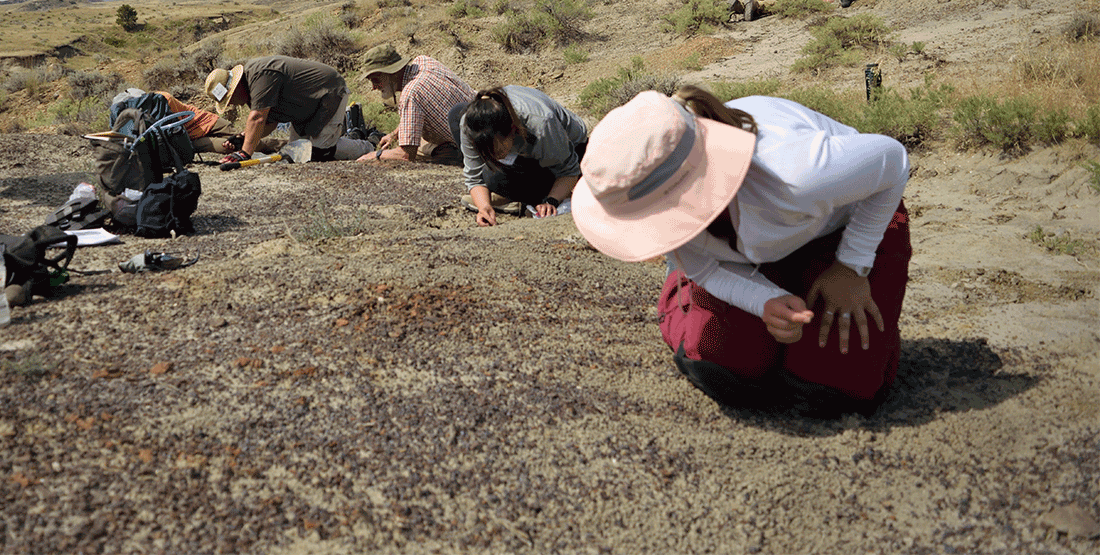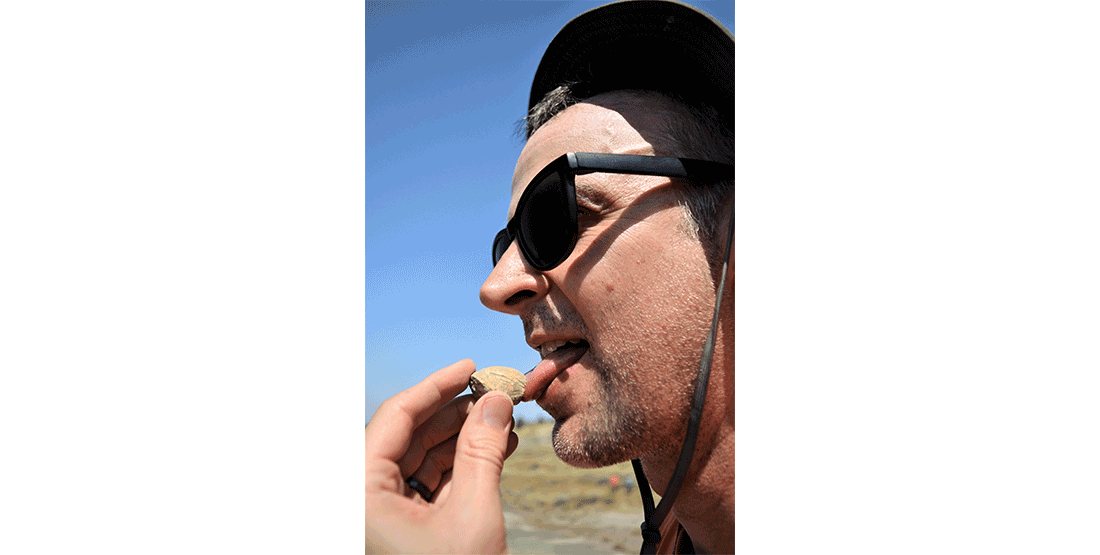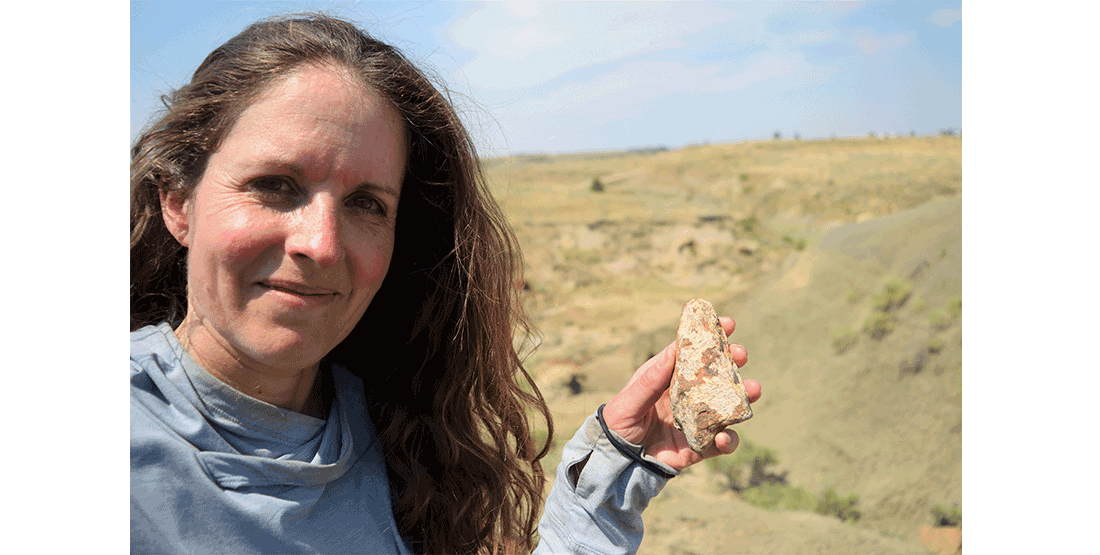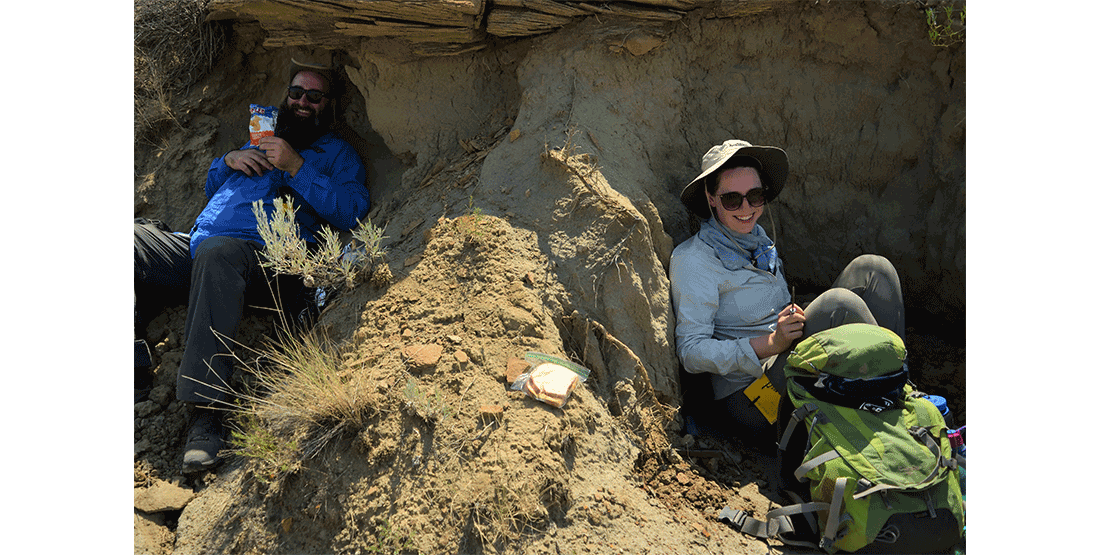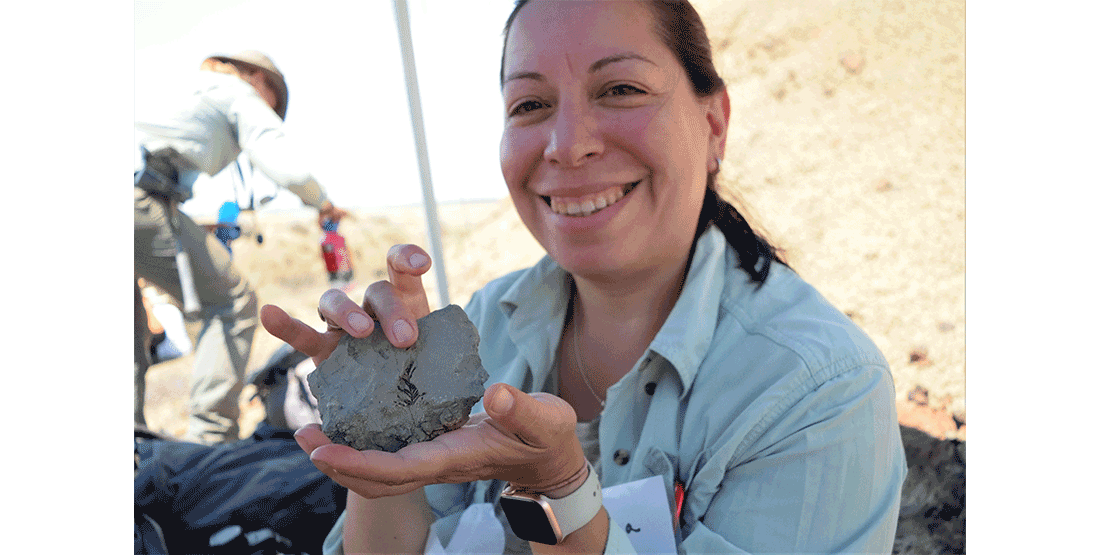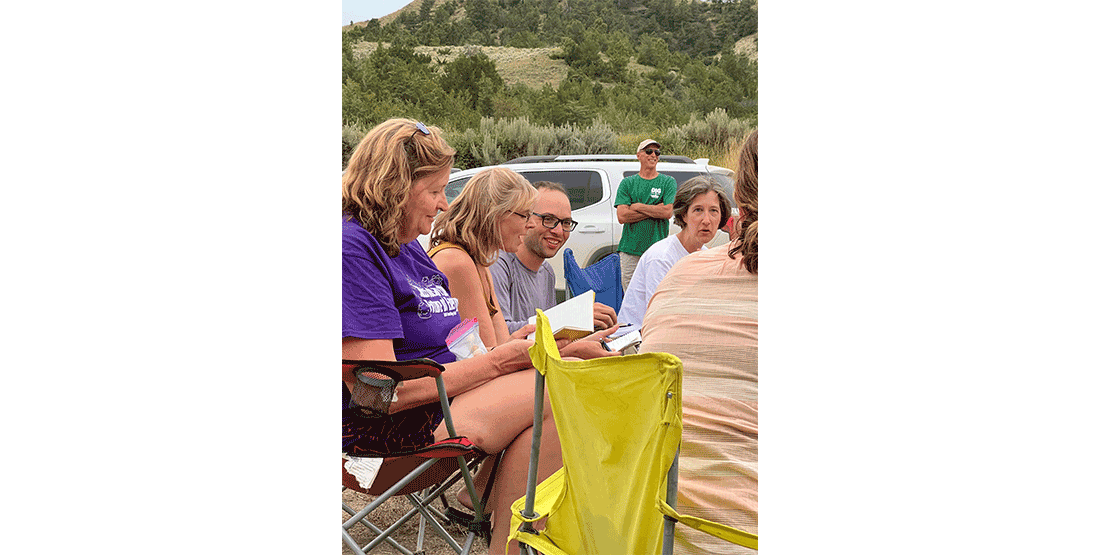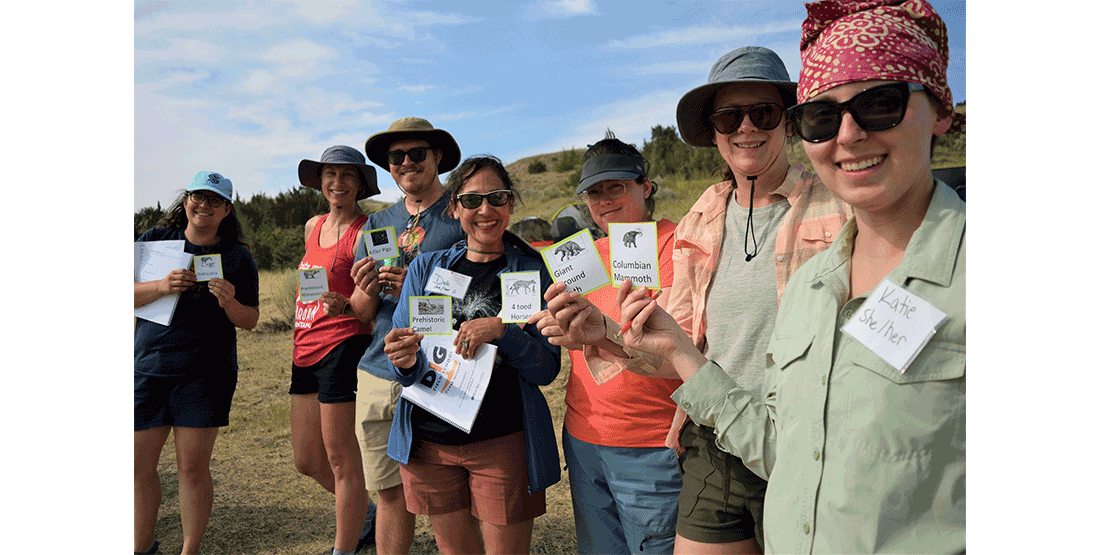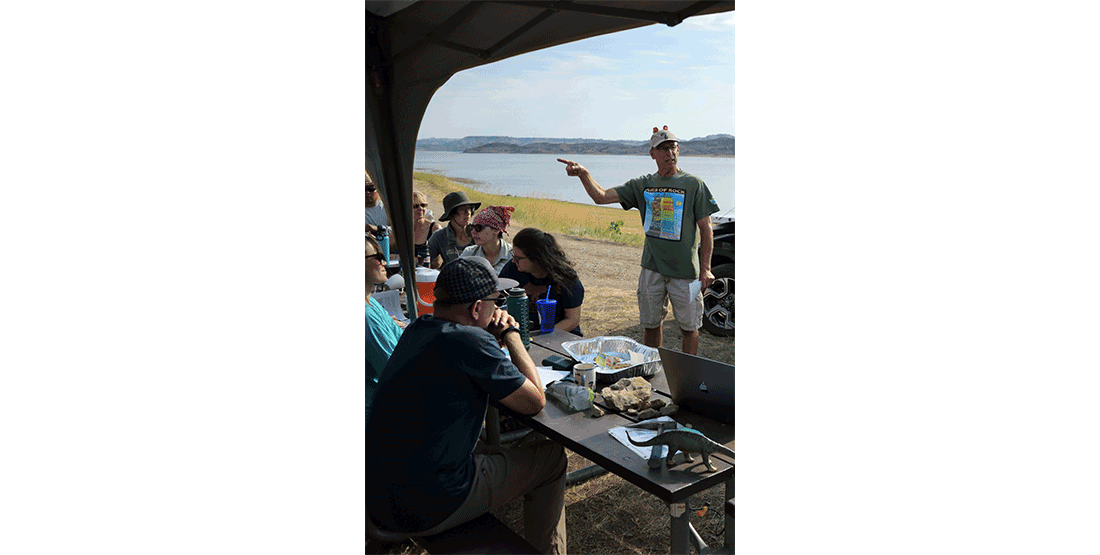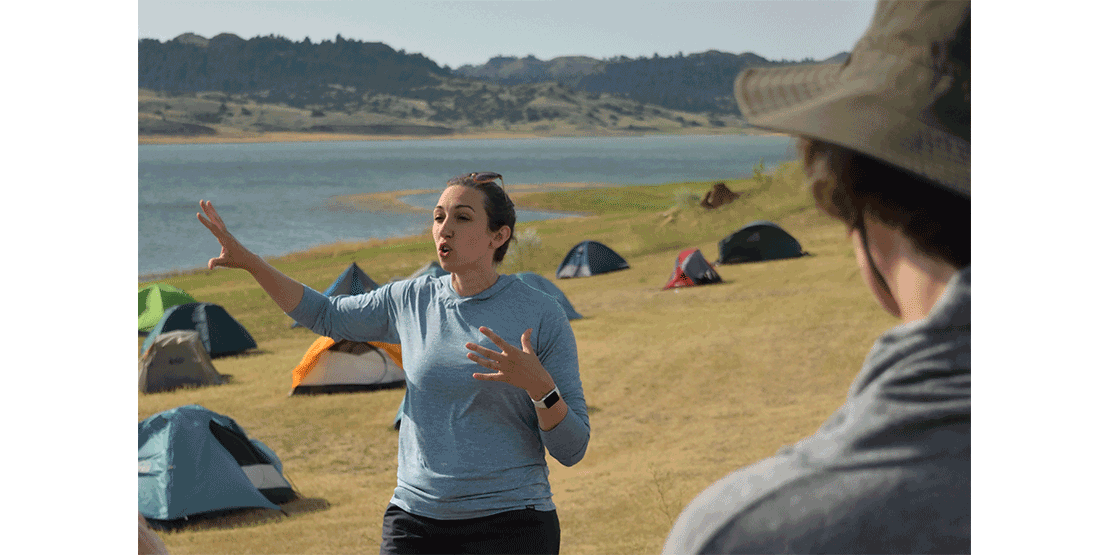Day 1 | Welcome and Orientation
Teachers arrived from across the country to participate in the DIG Hell Creek Field School program. DIG volunteers greeted participants at the Billings Airport and helped transport them to Hell Creek Recreation Area near Jordan, Montana. After checking in, participants set up camp beside Fort Peck Lake. After a long day of travel, participants were eager to settle in and get to know each other, along with the rest of the DIG Team.
- •
- •
- •
- •
- •
- •
- •
- •
- •
- •
- •
- •
- •
- •
- •
- •
- •
- •
- •
- •
- •
- •
- •
- •
- •
- •
- •
- •
- •
- •
Day 2 | Microfossils and Geology
This marked participants' first introduction to field work with the Hell Creek Project. The morning started off with a quick lesson in identifying microfossils — small fossils less than 4 mm in width that usually require magnification to study. DIG Instructors also provided an overview of the local geology. This region of Montana is unique because it contains two distinct geological formations: the Hell Creek formation — deposited during the Cretaceous Period — as well as the Tullock Formation dating back to the Paleogene Period. The divide between these formations, known as the K-Pg boundary, marks the mass extinction of non-avian dinosaurs.
- •
- •
- •
- •
- •
- •
- •
- •
- •
- •
- •
- •
- •
- •
- •
- •
- •
- •
- •
- •
- •
- •
- •
- •
- •
- •
- •
- •
- •
- •
- •
- •
- •
- •
- •
- •
- •
- •
- •
- •
- •
- •
- •
- •
- •
- •
- •
- •
- •
- •
- •
- •
- •
- •
- •
- •
Once in the field, participants learned how to identify these two distinct formations through observation and measuring the stratigraphic layers. Once the geological timescale was determined, DIG instructors led participants in surface collecting microfossils. Working in tandem, teachers crawled along their respective lanes, collecting as they went, until they identified the productive horizon, or the layer of rock out of which the microfossils had eroded. Participants then took samples of sediment which they later helped screenwash back at camp. In the afternoon, participants practiced identifying microfossils using their field guides. They will use this knowledge to help their students identify microfossils as part of a long-term study and community science initiative led by researchers at the University of Washington and the Burke Museum.
- •
- •
- •
- •
- •
- •
- •
- •
- •
- •
- •
- •
- •
- •
- •
- •
- •
- •
- •
- •
- •
- •
- •
- •
- •
- •
- •
- •
- •
- •
- •
- •
- •
- •
- •
Day 3 | Macrofossils
Affectionately known as ‘Dino Day,’ this day was all about macrofossils — larger fossils that can easily be seen by the unaided eye. Before heading off to collection sites, the DIG team met with the Thomas family, local ranchers who have worked closely with Hell Creek Project researchers to identify potential macrofossil sites. The day’s collection sites were all located on the Thomas ranch and the exposed bones were first identified by Les Thomas and his son while out checking on their cattle.
- •
- •
Once in the field, participants worked together in teams to help prepare macrofossil specimens, including multiple triceratops frills and a presumed triceratops femur. After making careful observations of the sites, participants surface collected larger bone fragments that had been washed downhill. DIG Instructors modeled how to carefully remove some of the surrounding rock matrix before applying a plaster field jacket. This jacket will help to protect the exposed bones until they can be safely transported back to the Burke Museum.
- •
- •
- •
- •
- •
- •
- •
- •
- •
- •
- •
- •
- •
- •
- •
- •
- •
- •
- •
- •
- •
- •
- •
- •
- •
- •
- •
- •
- •
- •
- •
- •
- •
- •
- •
- •
- •
- •
- •
- •
- •
- •
- •
- •
- •
- •
- •
- •
- •
- •
- •
- •
- •
- •
- •
- •
- •
- •
- •
- •
- •
- •
- •
- •
- •
- •
- •
- •
- •
- •
- •
- •
- •
- •
- •
- •
- •
- •
- •
- •
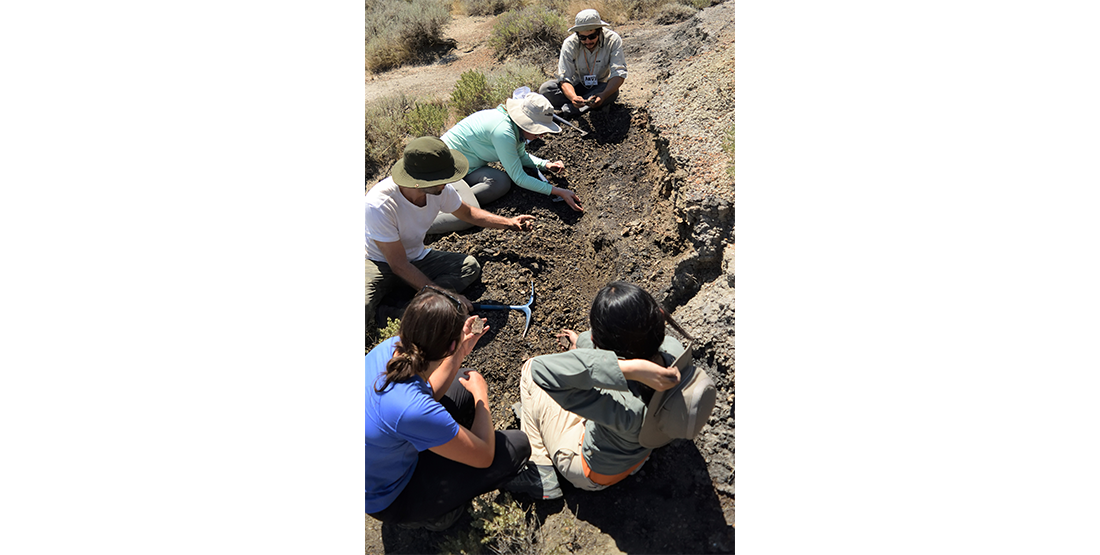
- •
- •
- •
- •
- •
- •
- •
- •
- •
- •
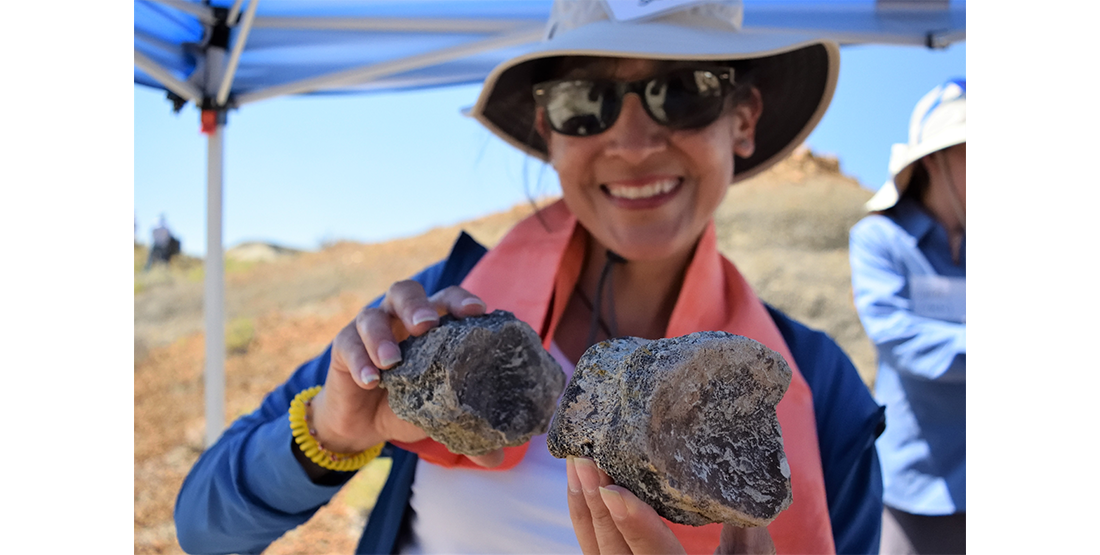
While working at another macrofossil site, some participants made a surprising discovery while looking for a spot for a bathroom break — several hadrosaur vertebrae fully exposed on the surface! The group quickly split up to start collecting at the new site — aptly named ‘Water Closet.’
Day 4 | Project Day
Participants had the opportunity to synthesize what they learned and immerse themselves in the work of paleontologists. Working in small groups, participants navigated to sites using GPS coordinates and then determined the best approach to surface collect fossils at their respective sites. They made observations and gathered data on their site’s geological formation to determine the approximate chronology of their location. Participants were able to see and study the K-Pg Boundary (pictured below) — the before and after of non-avian dinosaurs!
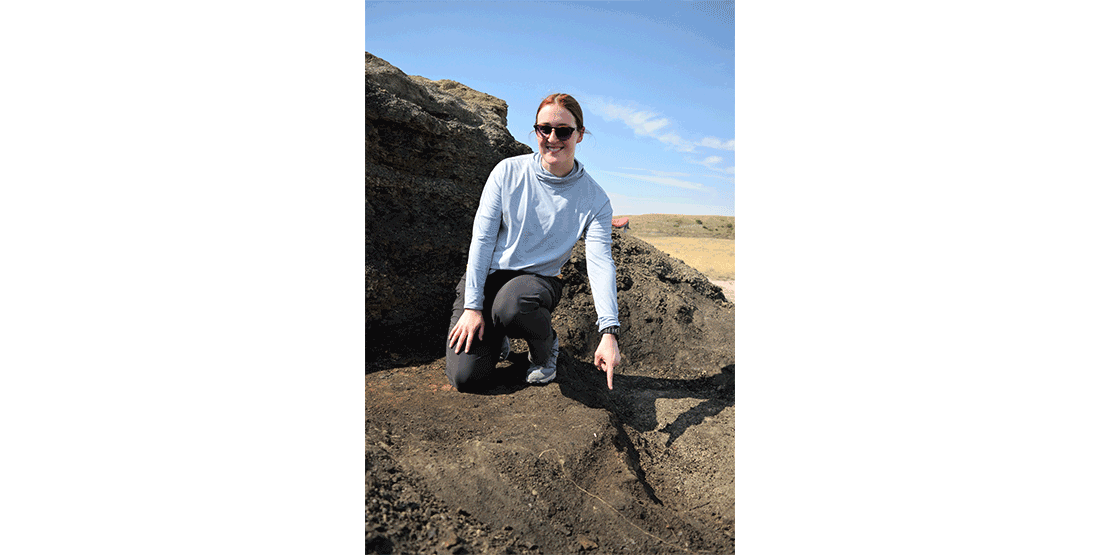
Despite the scorching temperatures — topping 115 degrees F — participants remained in good spirits, even requesting to stay out longer in the field. In the evening, participants presented their findings with the rest of the group. One of the key takeaways — fieldwork often involves a lot of searching for meaningful data with inconclusive results!
- •
- •
- •
- •
- •
- •
- •
- •
- •
- •
- •
- •
- •
- •
- •
- •
- •
- •
- •
- •
- •
- •
- •
- •
- •
- •
- •
- •
- •
- •
- •
- •
- •
- •
- •
- •
- •
- •
- •
- •
- •
- •
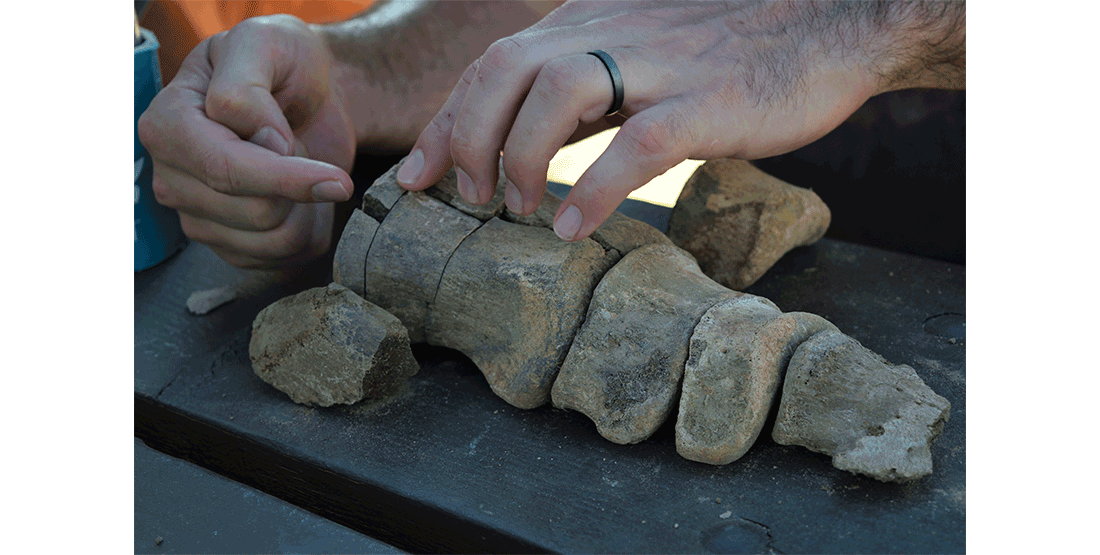
One group made an exciting discovery at their project site: an articulated hadrosaur toe buried in loose sediment!
Day 5 | Education Day and Wrap-up
Teachers focused on ways to bring what they learned back to the classroom, engaging in activities and discussions about STEM education and ways to align their teaching practices with Next Generation Science Standards. They also got a closer look at the Foundations and Microfossil DIG Boxes, hands-on resources developed by the DIG Field School and the Burke Box program to supplement teachers’ classroom curricula.
- •
- •
- •
- •
- •
- •
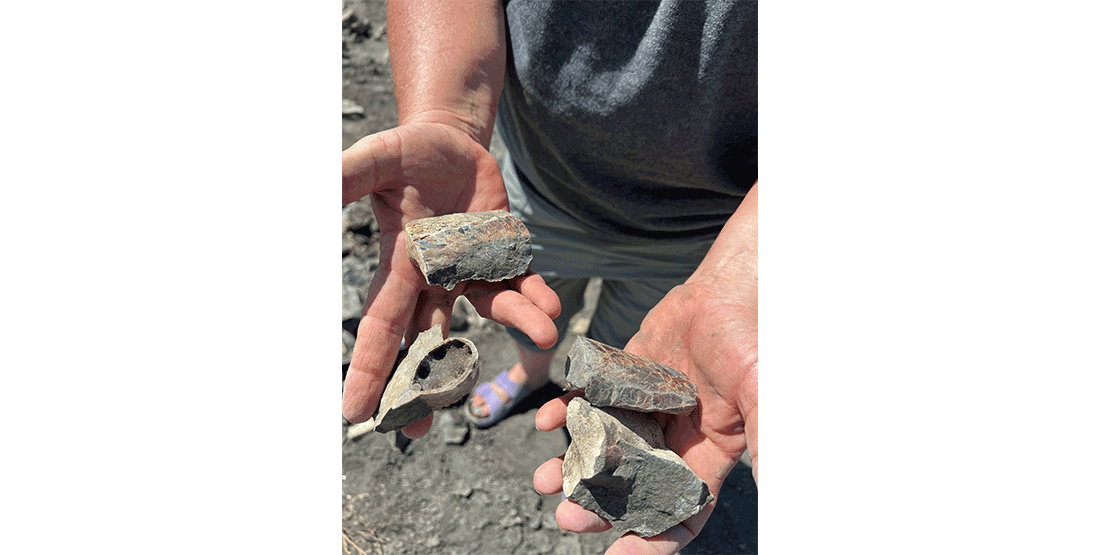
Photo: Garry Norman
In the afternoon, some participants took a boat ride to a nearby beach to collect baculite fossils, a type of ancient marine invertebrate. Later, everyone celebrated their momentous work and learning from the past fours days at DIG Graduation in the evening.
Congratulations to the 2023 DIG Field School Hell Creek cohort! Best of luck in the next year — we can't wait to hear how you bring your experience back to the classroom.
